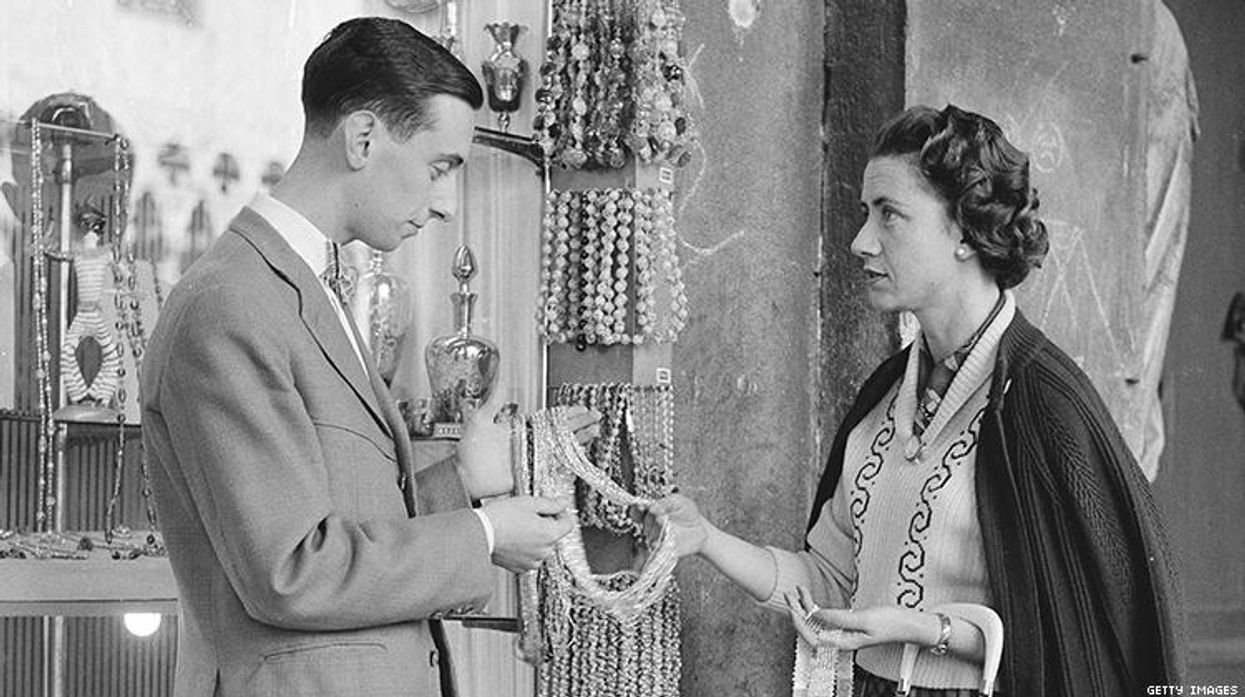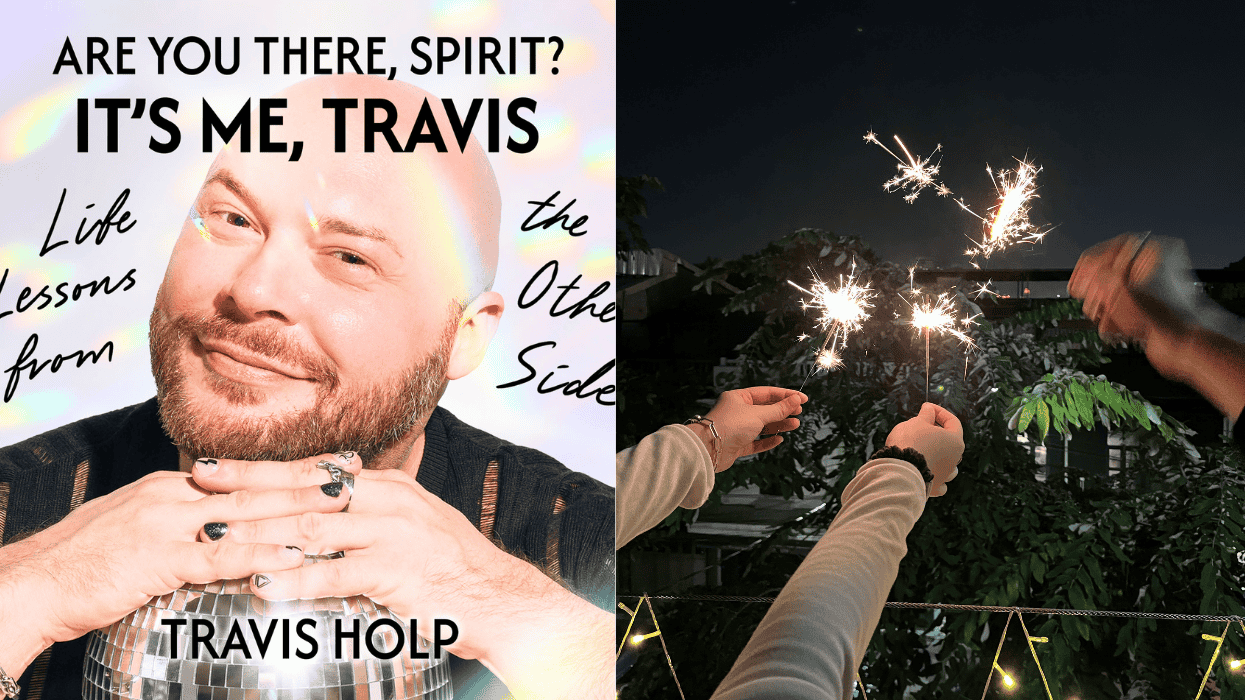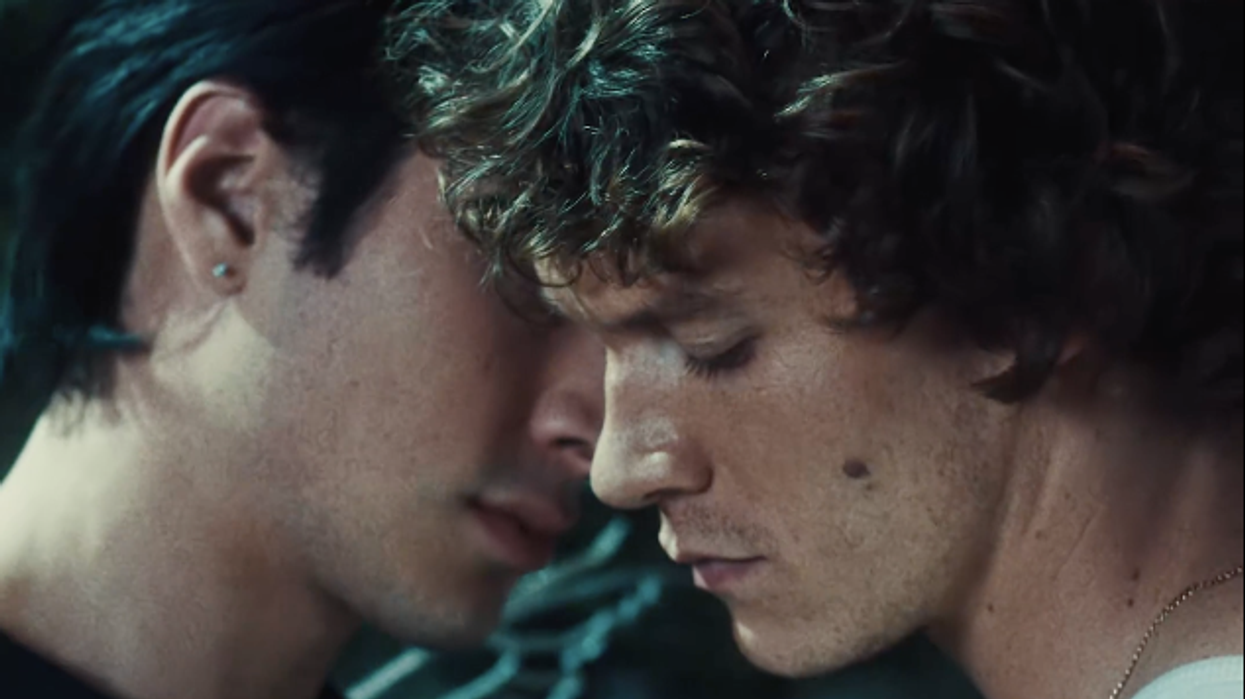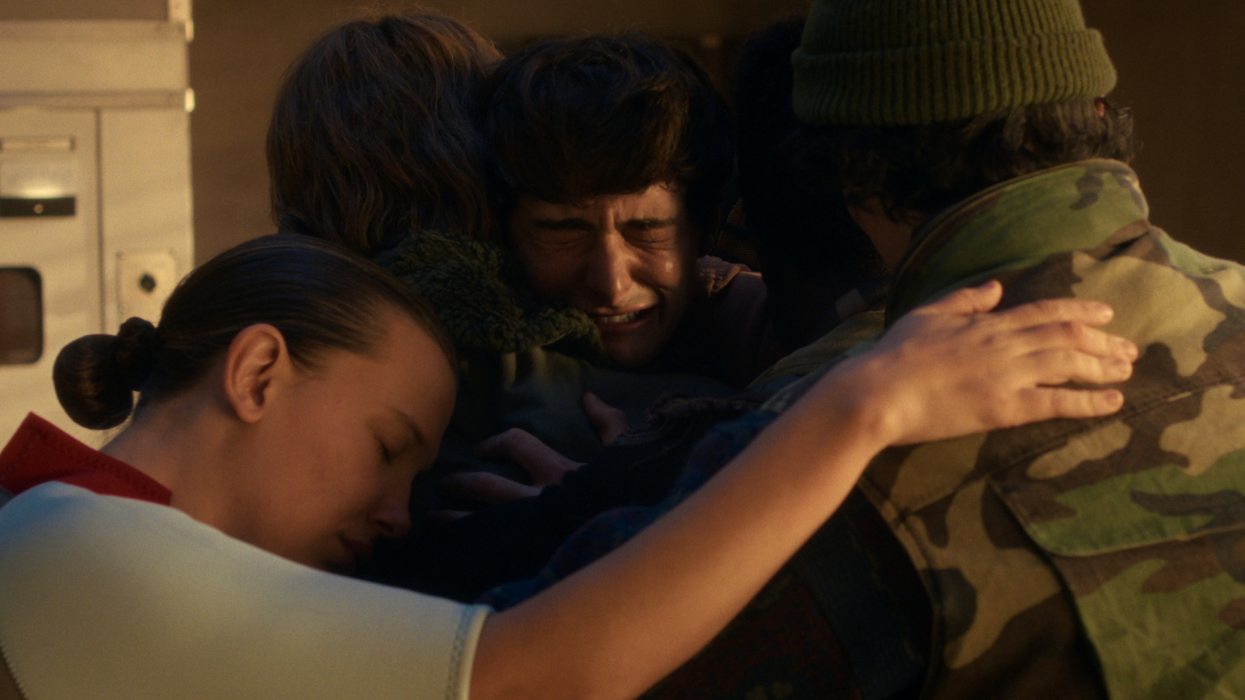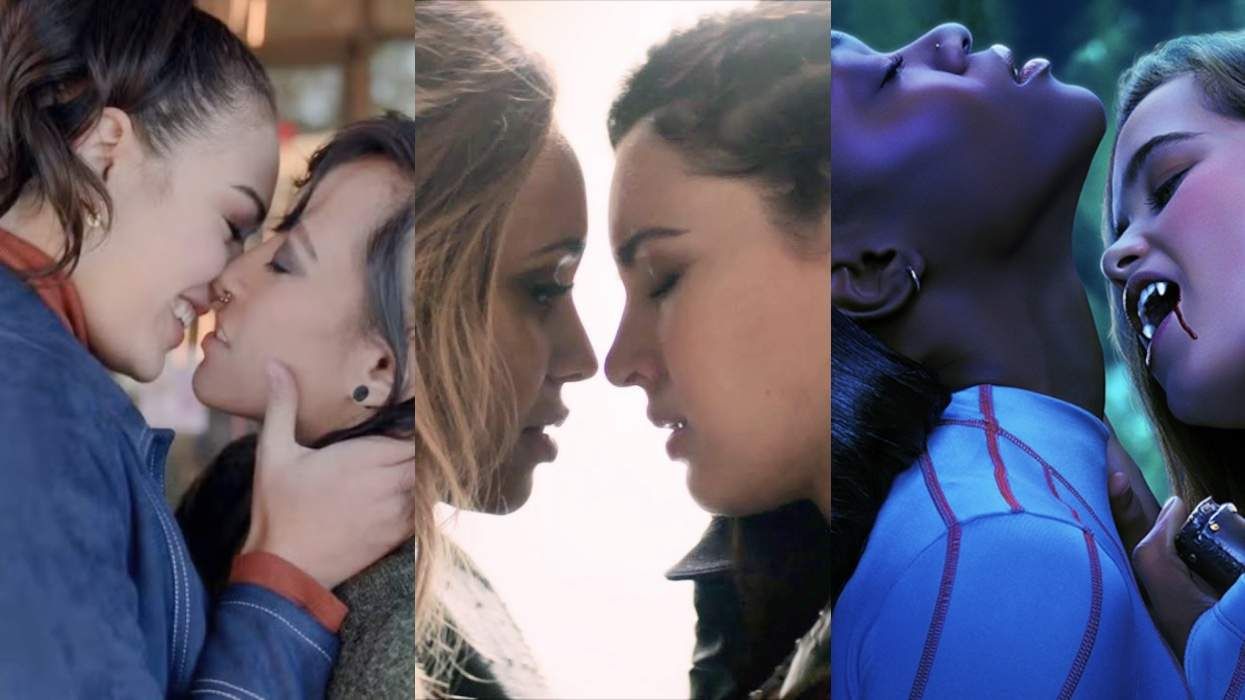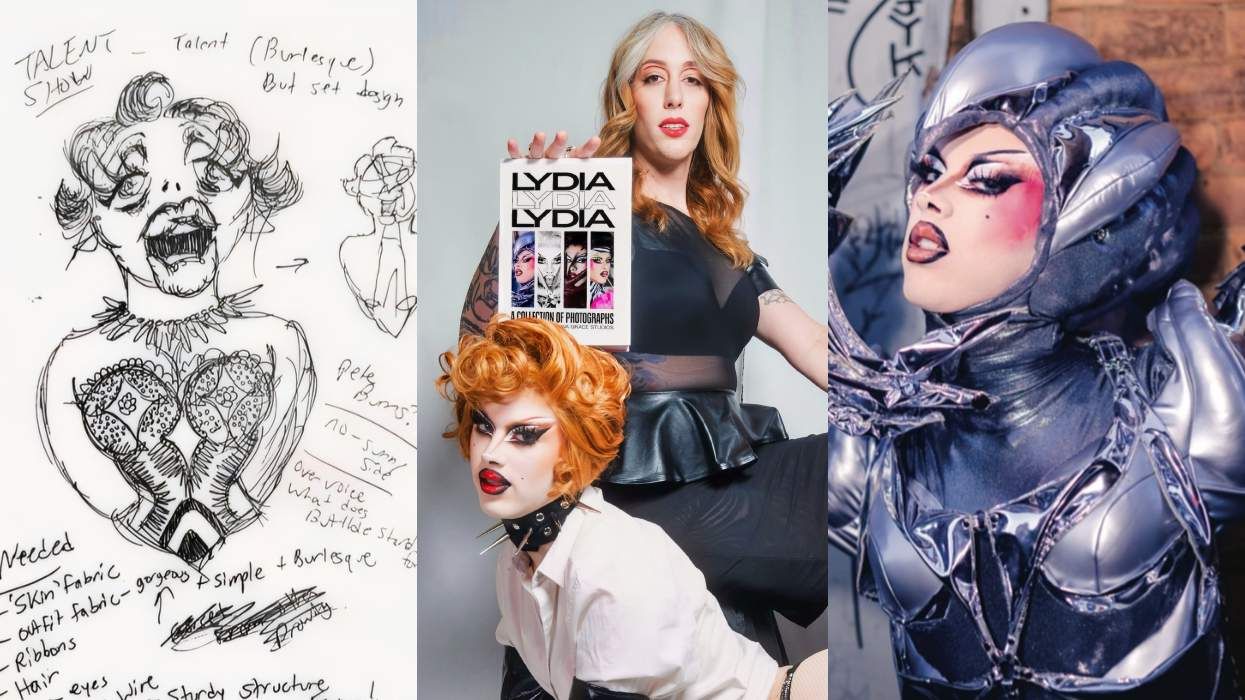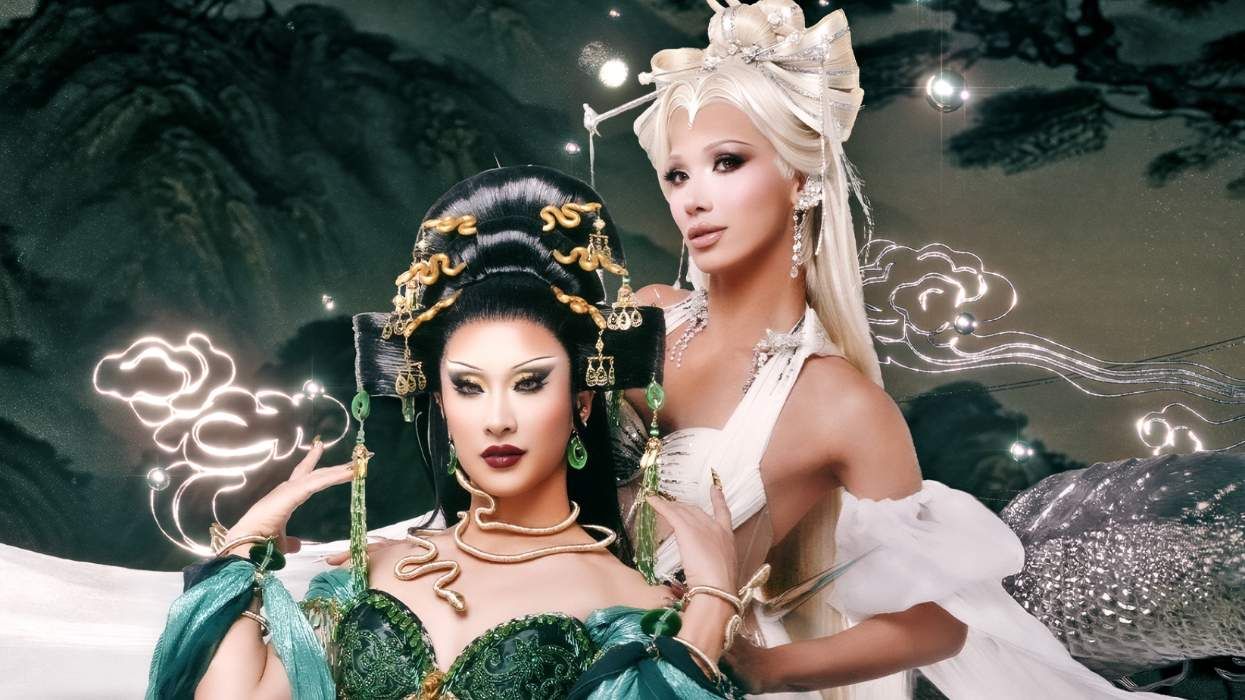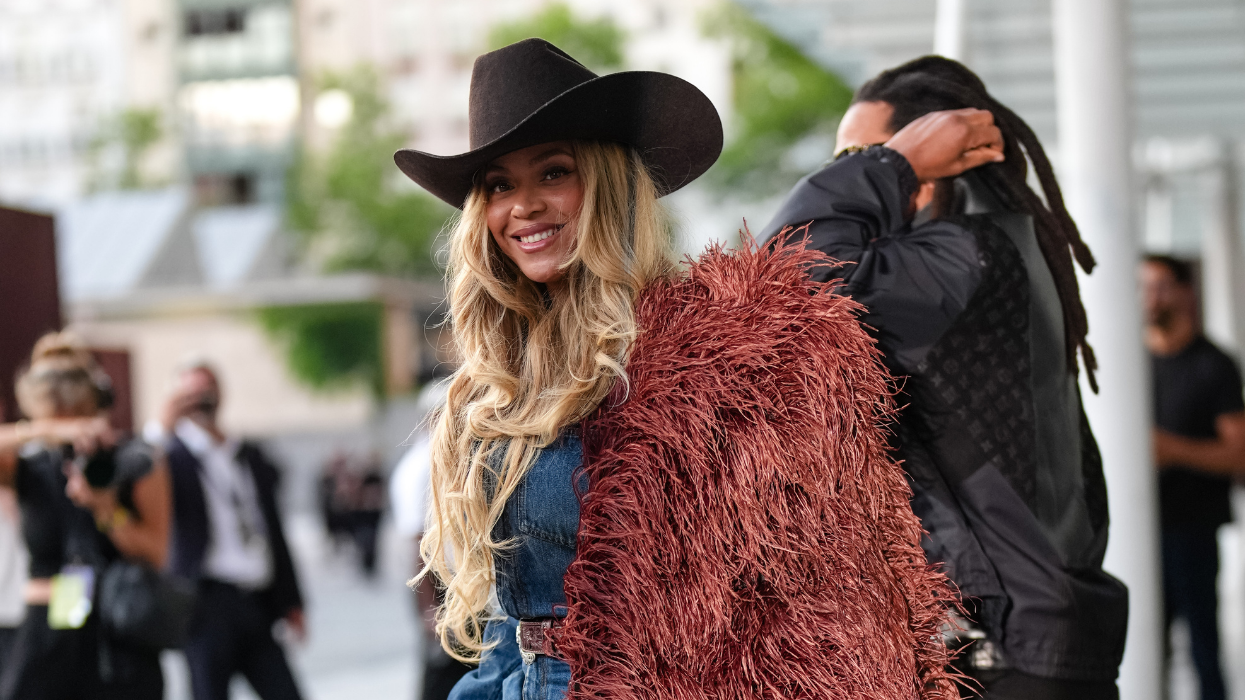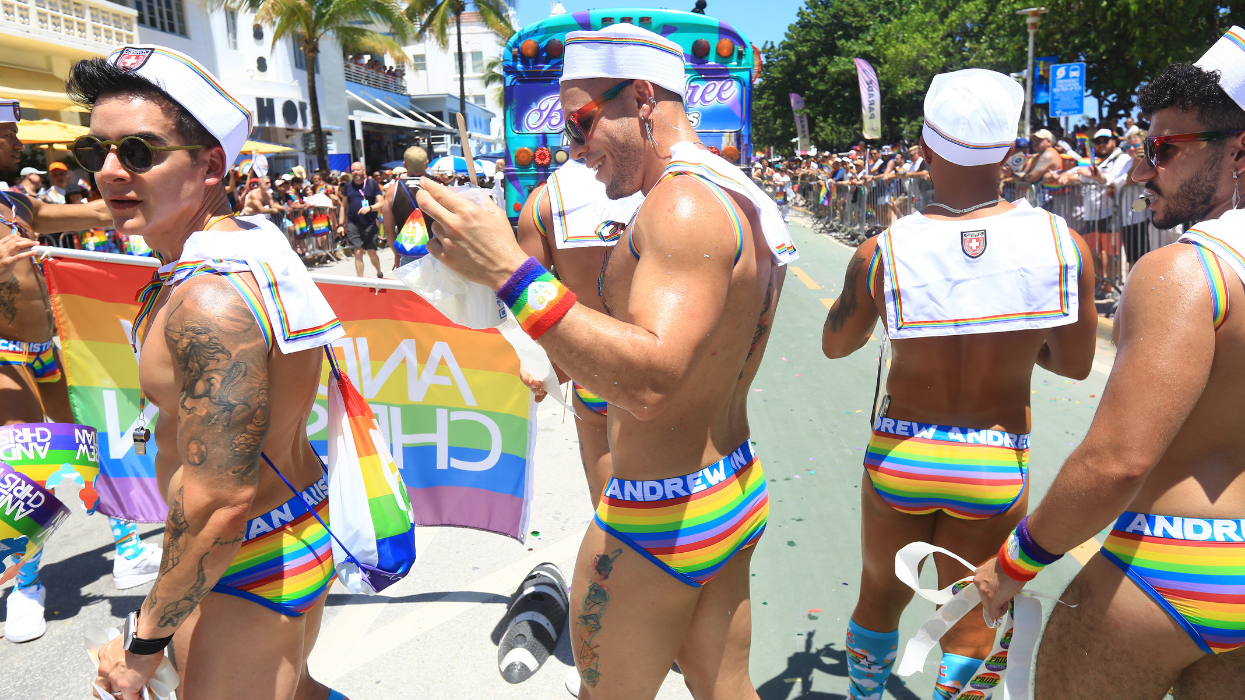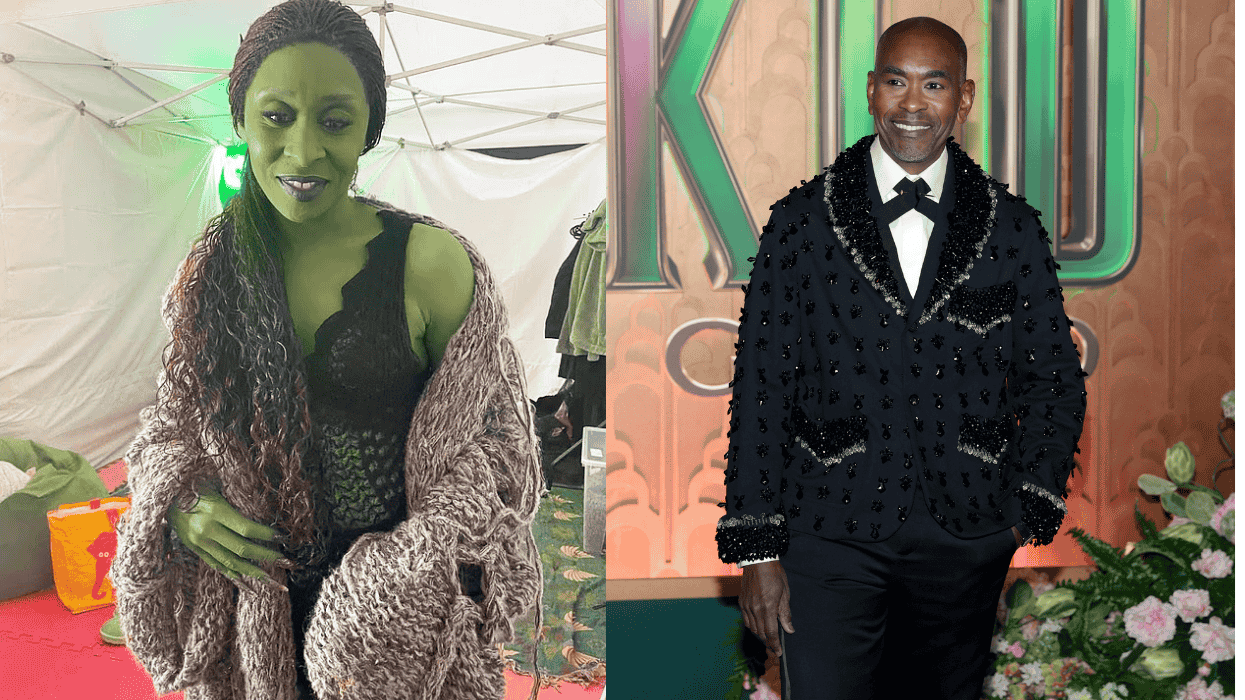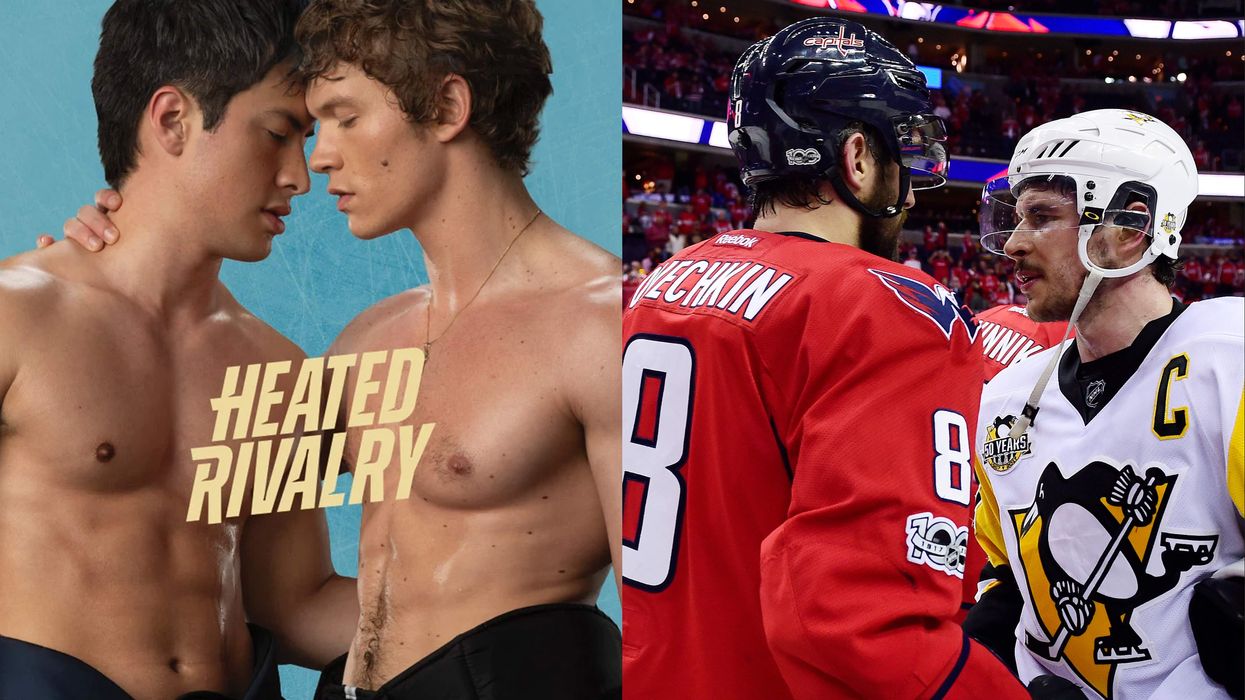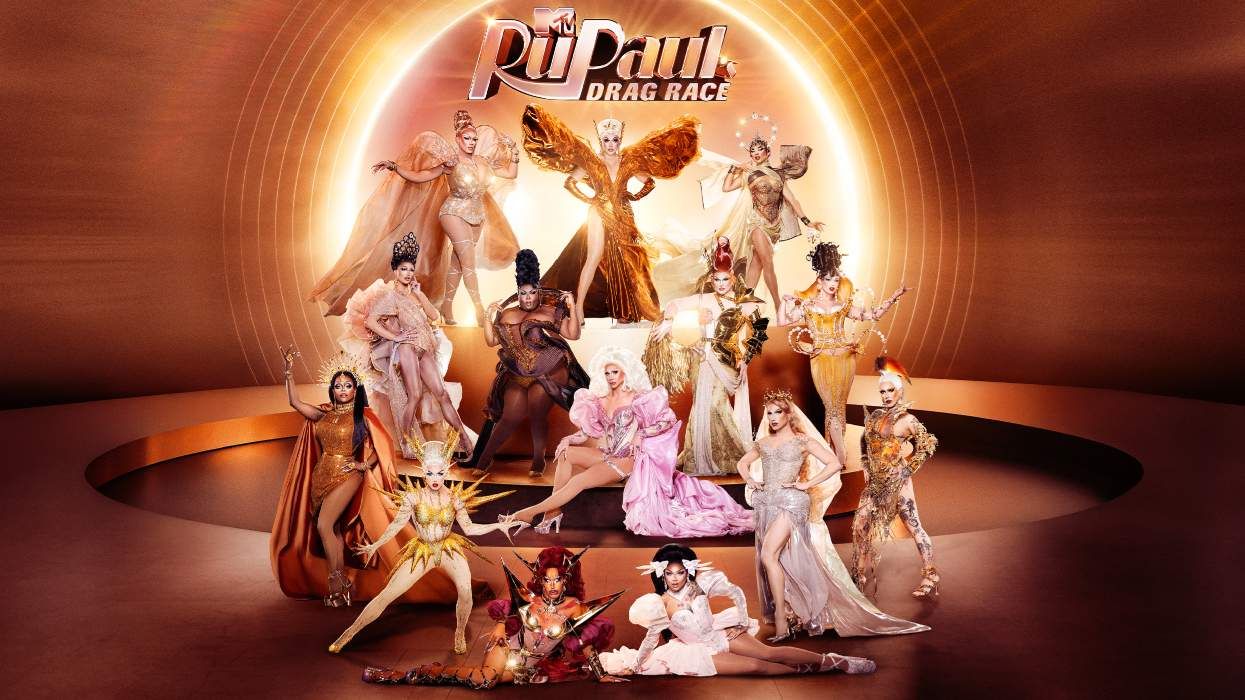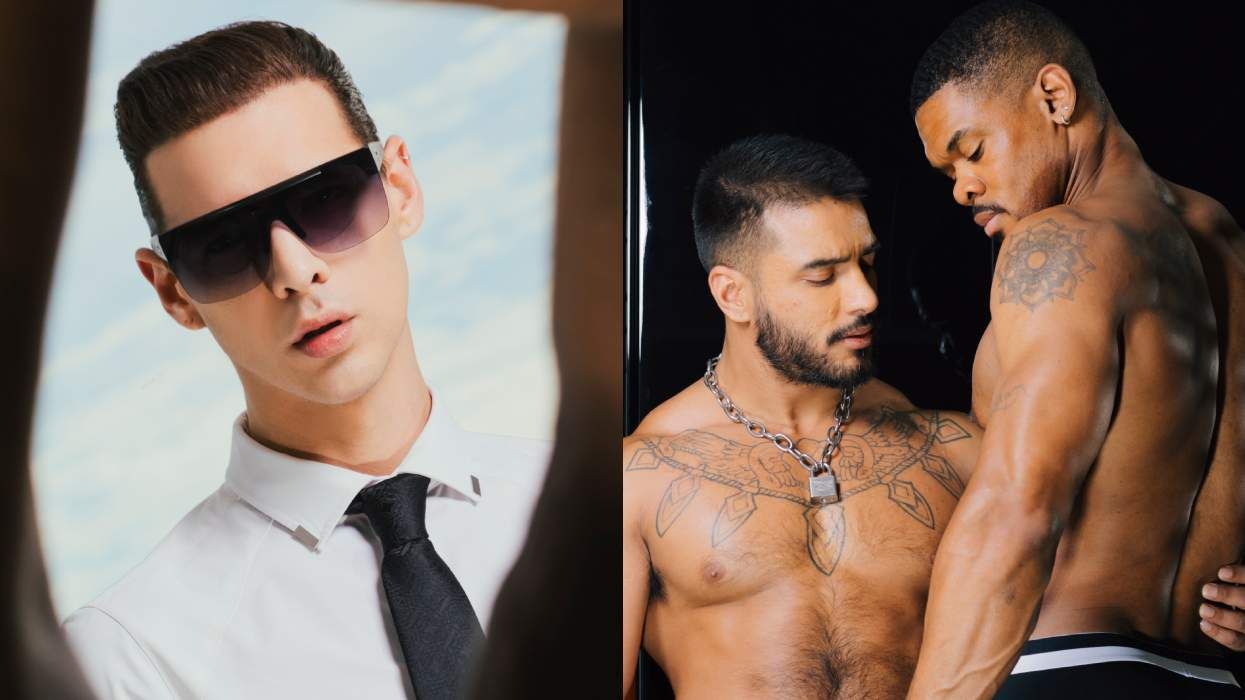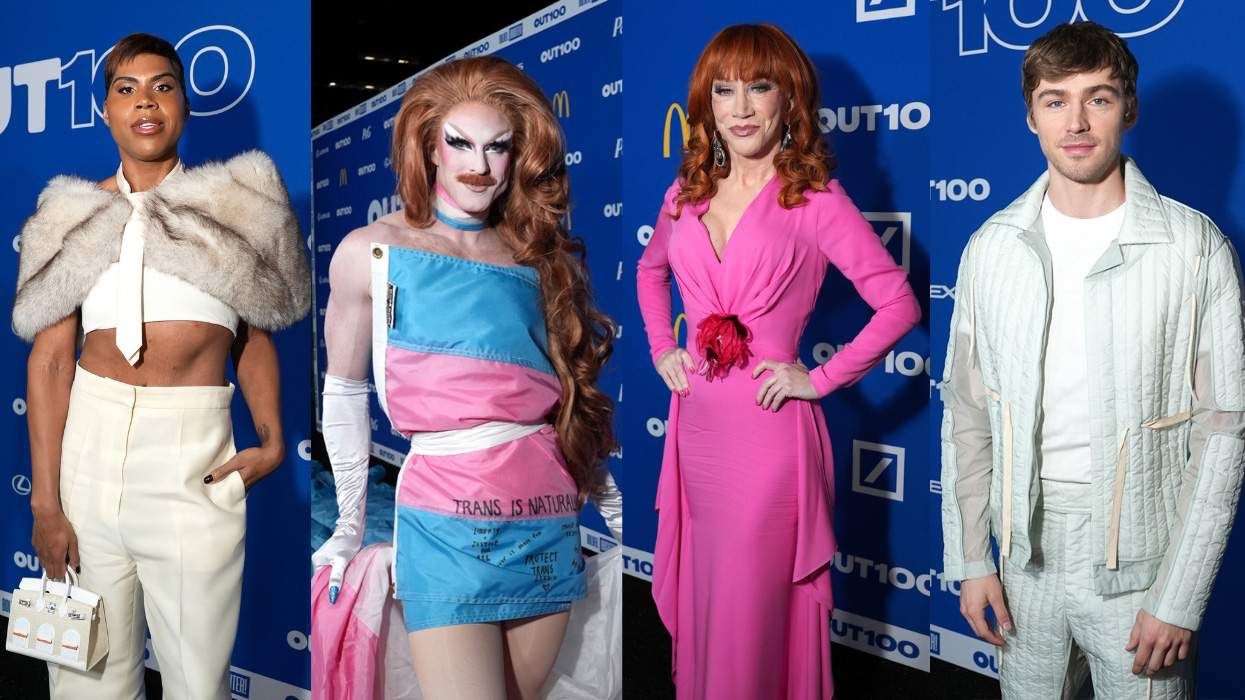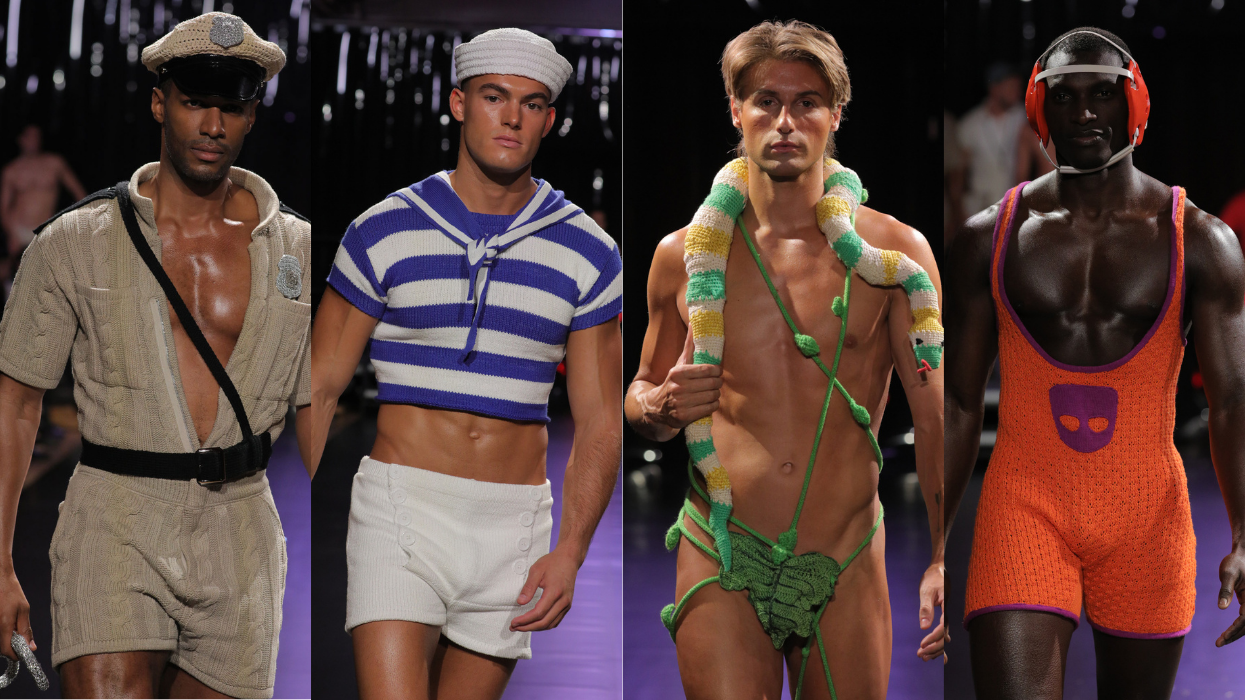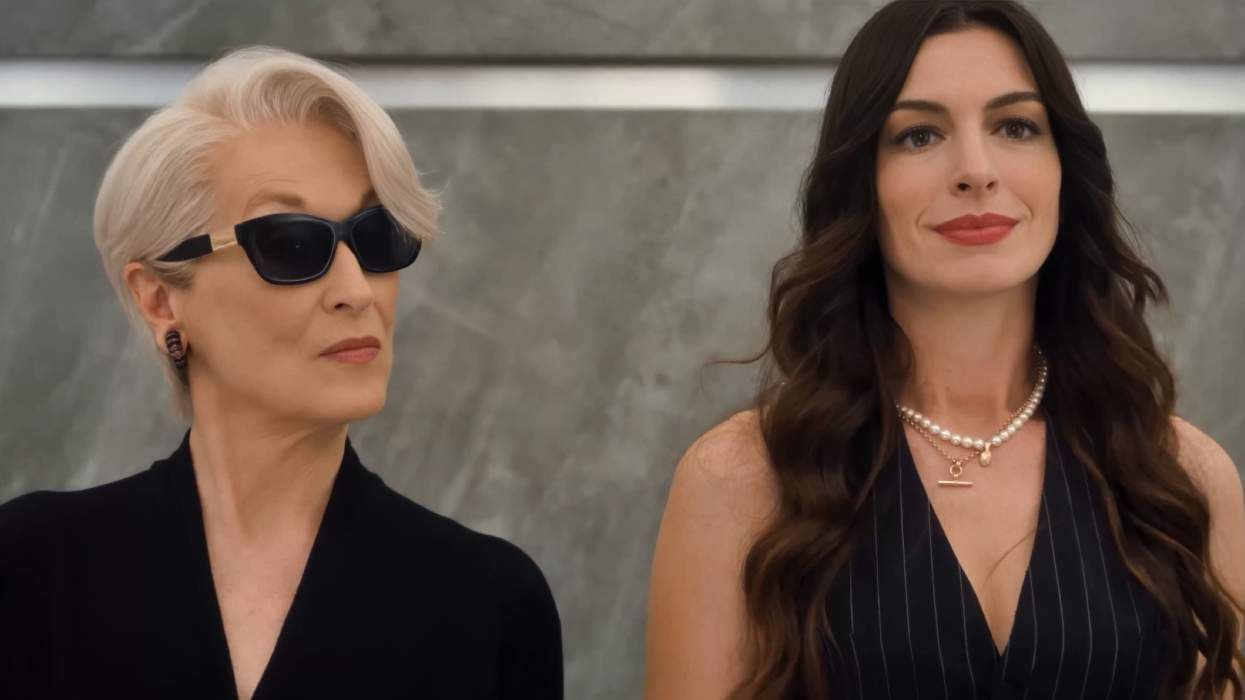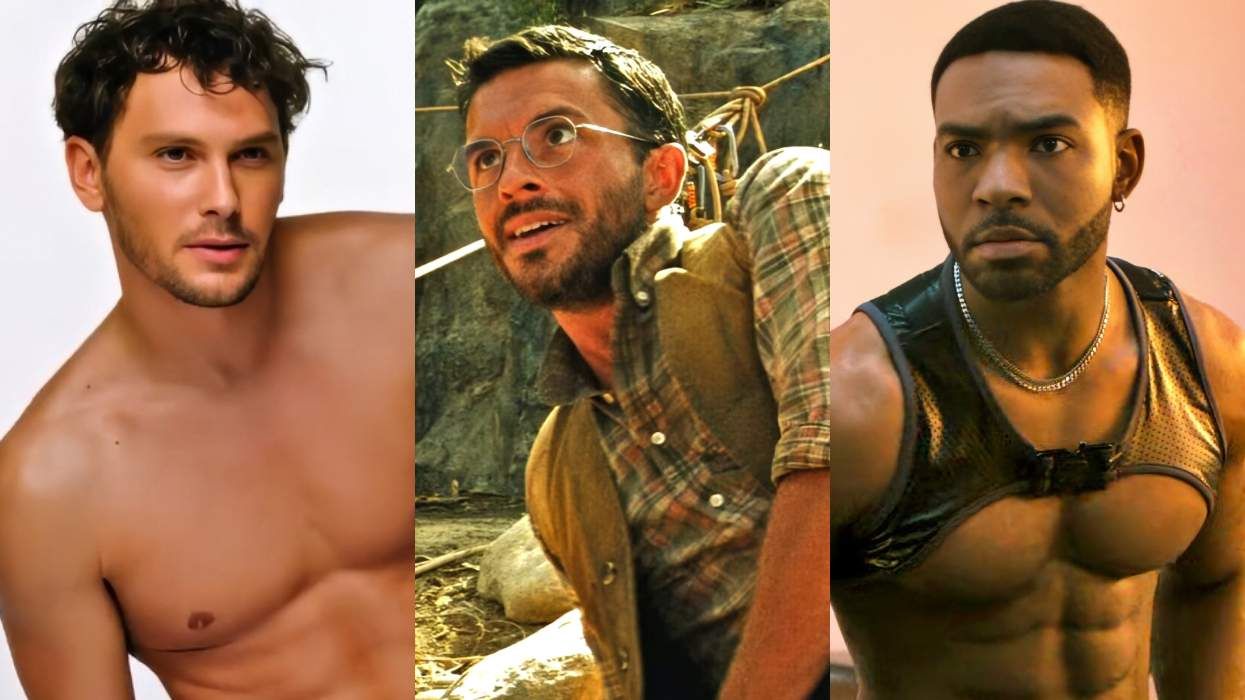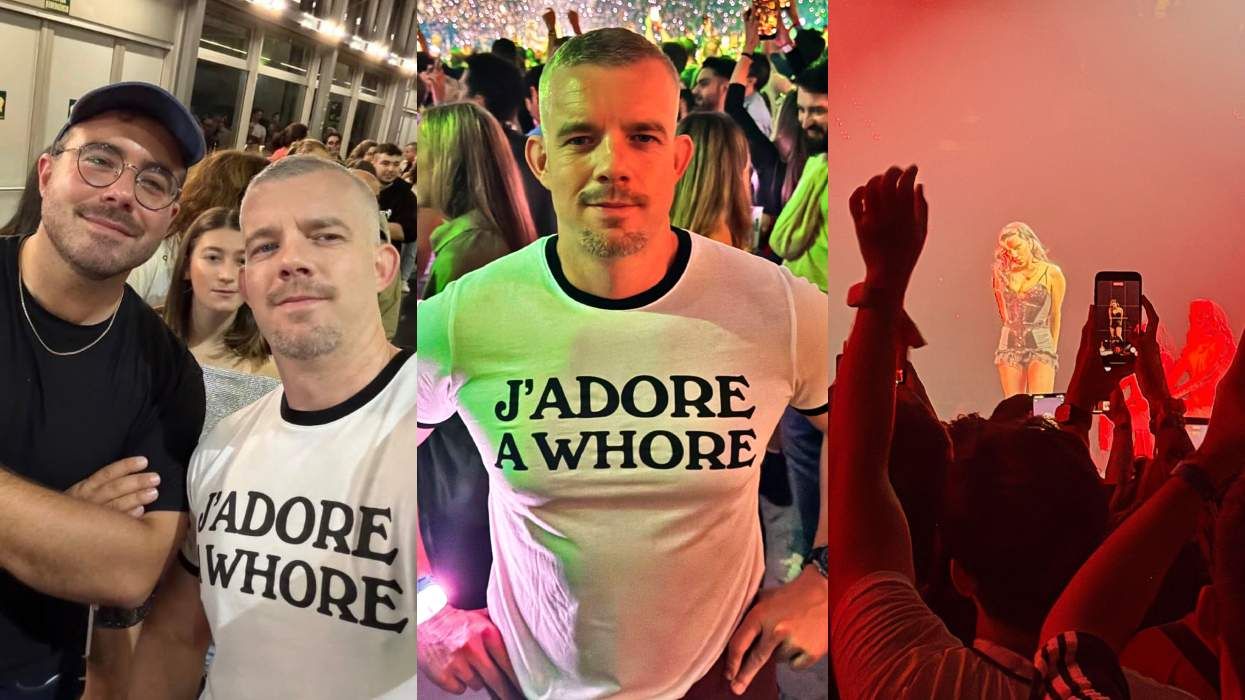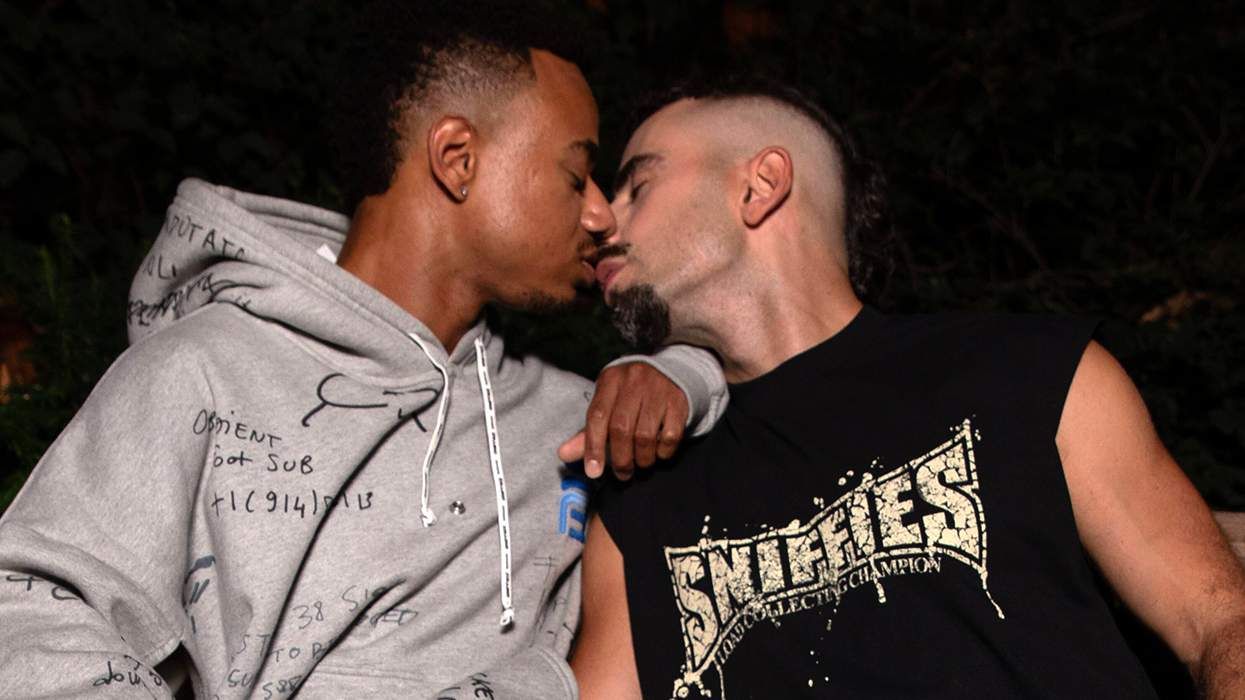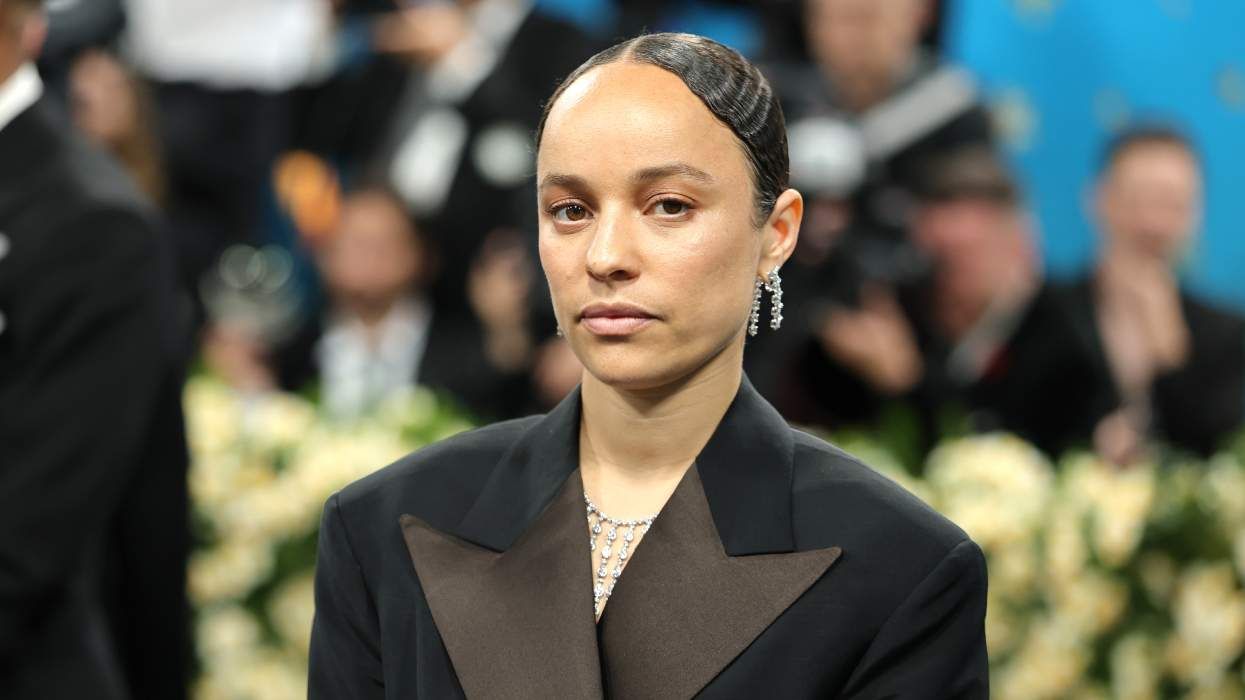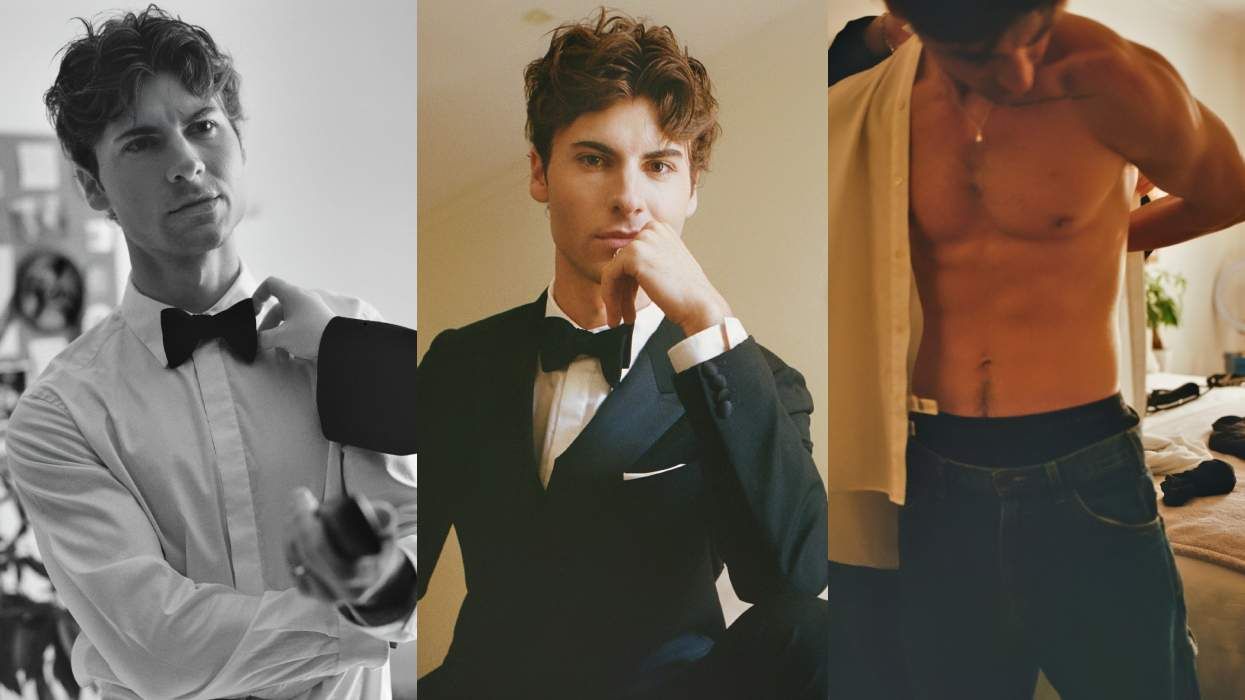When the phrase "glitter and be gay" crosses my lips, as it often does, (occupational hazard of working in luxury jewelry) it usually makes me think about homosexuality and the world of fine jewelry. The two would seem like peas in a fabulous pod, but the fact is that they are often pushed away from one another.
A bygone era's caricature of a gay person would absolutely be dripping in gaudy jewels, effeminate pinkie rings, campy brooches, and gold chains a la Liberace -- yet, in the canon of jewelry history, these narratives are recorded few and far between.
Where it is still true today that some of the most important contemporary jewelers such as Shaun Leane or Joel Arthur Rosenthal are openly gay men, a tremendous amount of the most important jewelry designers of the 20th century often had their queerness erased from the books.
For example, in the mid-20th century, it was the curse of the "confirmed bachelor." Truman Capote had his swans of Fifth Avenue -- socially connected women of means that sought Capote's companionship due in part that he was a friend and confidante without the complication of sexual attraction. These sorts of men didn't fit into any societal box, so they were put into the charming, lovable, and usually benign category of "non-threatening" male stalwart.
Similarly, there's a special relationship between a gay jeweler and his client. She plays the role of a muse, a physical manifestation of his dreams and desires; Pygmalion, but without all the problematic, frankly misogynist, possessive idolatry.
But why is there such limited dialogue about these jeweler's private lives? I wonder if their discrete nature allowed them to become as successful as they did. The list from the 20th century is long: Fulco di Verdura, Jean Schlumberger, Donald Claflin, Aldo Cippulo, Art Smith, David Webb, Kenneth Jay Lane, they all were men of a "certain disposition," hugely successful, and had clients cut from the right cloth that let them flit up and down New York City bejeweling the chosen few.
One of the greatest jewelry collectors and divas of the last century was Elizabeth Taylor. She had major jewels from Cartier, Tiffany, Van Cleef & Arpels, David Webb, and many other storied houses of gems. From costume designers, make-up artists, hair stylists, and even co-stars, Ms. Taylor was surrounded by "confirmed bachelors" her entire life, so it only makes sense that her personal jewelers would have occasionally fallen into that category as well.
Elizabeth Taylor and Richard Burton's love affair was constantly splashed across the pages of newspapers and magazines, and their deeply heterosexual relationship was often cited as the source of her fabulous gems and jewelry collection. One rather famous instance came from within Cartier itself.
Cartier's Love Bracelet was designed in the late 1960s, and is perhaps the brand's biggest seller to this day. It is a rather simple band of gold, with sunken screws. The piece can only be secured with the help of a miniature screwdriver and a loved one. Cartier launched this design with fanfare at their New York City flagship by gifting 25 celebrity couples the bracelet, and this of course included Taylor and Burton.
Aldo Cipullo, the young designer of the Cartier Love Bracelet, was born in Rome and moved to New York to pursue his dreams. When he passed away tragically at the age of 42 in 1984, The New York Times reported that he suffered two heart attacks at St. Vincent Hospital. According to the Instagram account @theaidsmemorial, Cipullo died of AIDS related complications. The Instagram post details his contributions to fashion and jewelry.
There is a brief mention of Cipullo's inspiration for the Love Bracelet that was written for an exhibition held at the Cartier Mansion, stating that he was up until 3 AM after a relationship ended and wanted to make a representation of love that "nobody could take away from him." The internet is devoid of any other real mentioning of Cipullo's sexuality, and while Cartier celebrates the Love Bracelet endlessly, the company certainly hasn't been very open about Cipullo's personal life.
On the other hand, Jean Schlumberger's queerness has gotten some attention recently. He was an iconic designer at Tiffany & Co., and was extremely close with his major clients, such as Jackie Kennedy, Elizabeth Taylor, and Bunny Mellon. Mrs. Mellon struck up a special friendship with Schlumberger and commissioned endless jeweled objects and jewelry. Their letters back and forth are strewn with illustrations of flowers, and he even designed a jellyfish brooch for her after she was stung. In an exhibition catalogue devoted to Schlumberger's work, his life partner Luc Bouchage is mentioned, and his photography fills the book. Bouchage's descendants helped organize and give valuable insight to the exhibition. Many others deserve this level of recognition.
Art Smith, an Afro-Cuban jewelry designer, experienced major hardships during the course of his career due to both his sexuality and race. He had studied at the Cooper Union, and taken night courses in jewelry-making at NYU. In the 1940s, he opened a jewelry shop in the heart of the West Village, but was made to feel unwelcomed on the largely Italian block. He moved deeper within, and found a space on West 4th where he could comfortably express himself as a gay black man. His designs made the pages of Vogue and Harper's Bazaar, and he even made jewelry for the likes of Duke Ellington and Eleanor Roosevelt. He passed away in 1982 with little money, but these days his silver sculptural jewelry sells for thousands of dollars and are held within the collections of the Brooklyn Museum, the Boston Museum of Fine Art, and the Cooper Hewitt Smithsonian Design Museum in New York.
In today's modern world, one would think that every jeweler who identifies as gay would be open, out, and proud. Compared to the fashion industry, where many designers have used their platforms to speak about equality, inclusivity, diversity, and gendered issues far beyond their own experience, jewelry comes up short.
To be fair, there are many factors at play. Huge brands owned by European conglomerates don't have the freedom or nimbleness that independent and living designers have when it comes to their choices and messaging, much less an individual persona that needs to shine through. Many jewelers, whether queer or not, are extremely private about their personal lives. Some even refused to ever be photographed, as a stipulation of their insurance policies.
Many long-standing family dynasties in the jewelry world are completely patriarchal, and thus, that much more difficult to pass the family business down to someone who might not seem publically suitable to hold it. Tiffany, Cartier, Van Cleef & Arpels, Harry Winston, all were companies run by men and their sons at one time.
However, we can certainly point to Tiffany and Cartier having had campaigns that target youthful, modern customers, and even occasionally gay couples, when it comes to engagement rings. Even smaller heritage brands can get on board with modern love messaging. The House of Verdura dressed Lena Waithe in two gold brooches with a kaleidoscope of gemstones when she famously wore her rainbow cape by Carolina Herrera at the Met Gala red carpet in 2018. The house of David Webb dressed RuPaul in rings and a necklace for the Camp-themed Met Gala in 2019.
Among the openly queer jewelers working today are Shaun Leane, Alexis Bittar, Joel Arthur Rosenthal, and Emmanuel Tarpin, to name a few. Tarpin is just 26, based in Paris, and has emerged onto the high jewelry scene with a bang, recently winning a Town & Country Jewelry award for Breakthrough Designer of the Year. Rihanna and Mandy Moore have worn his jewels on the red carpet, and his work has sold at Christie's New York.
British designer Shaun Leane historically worked with Alexander McQueen on jewelry for his runway looks, and created some of the most elaborate sterling silver body jewelry that recalls skeletal structures and alienesque forms growing out of the wearer. Much like McQueen's fashions, these jewels acted as armor against divisiveness. Leane has never shied away from his truth from the way he dresses, the friends he has, and the way he speaks about his path, and that provocative queerness comes through in his designs.
American Alexis Bittar is largely a fashion jeweler, working in lucite and other non-fine materials. Michelle Obama wore his work frequently during the Obama Administration's tenure. In 2013, he wrote a blog post on his website detailing the importance for Gay Pride, in conjunction with the celebration of Marriage Equality.
Joel Arthur Rosenthal, known as JAR in the industry, is an American living in Paris, and working at the pinnacle of couture fine jewelry. His client lists are the ultra exclusive, such as Gwyneth Paltrow, Mimi Haas, and Lauren Santo Domingo. He is famously reclusive and selective, and the work is immaculate. When the Metropolitan Museum of Art mounted an exhibition of his work, the Economist cited "his partner in business as in life, a former psychiatrist called Pierre Jeannet whom he met in 1966..." and that was that. Even JAR, reclusive as he is, was comfortable disclosing the extent of his relationship with Pierre to those that explored his work during this major moment for him.
In researching this topic, many in my field have asked me, why does it matter? Does a jeweler's sexuality or the discussion of their preferences warrant merit when dissecting their work or their place in cultural history? I always answered with a feeble "representation matters," not wanting to rock a collegiate boat too much. But that couldn't be more true. At the highest echelons of commerce, collectors, and carats, queerness has to count for something. Indeed, there are so many jewelers, male, female, straight, and gay, who prefer to not discuss any aspect of their personal lives, as it may distract from their work. However, bringing it forward allows for a deeper understanding of their processes, relationships, and creativity. And shaking up the status quo in typically very privileged and heteronormative industries is a good thing.
I recognize this is an enormous topic, and one I've only scratched the surface of. I stand by my assertion that any queer jeweler's ability to get close to their clients, have certain sensitivities others would not, and living their truth through their art allowed them to become the great artists that we know today. Their queerness was a gift, and should be celebrated, not assumed to be inconsequential.
RELATED | Hugh Ryan Recounts Our Forgotten Queer History--And Makes Us Remember Our Past


